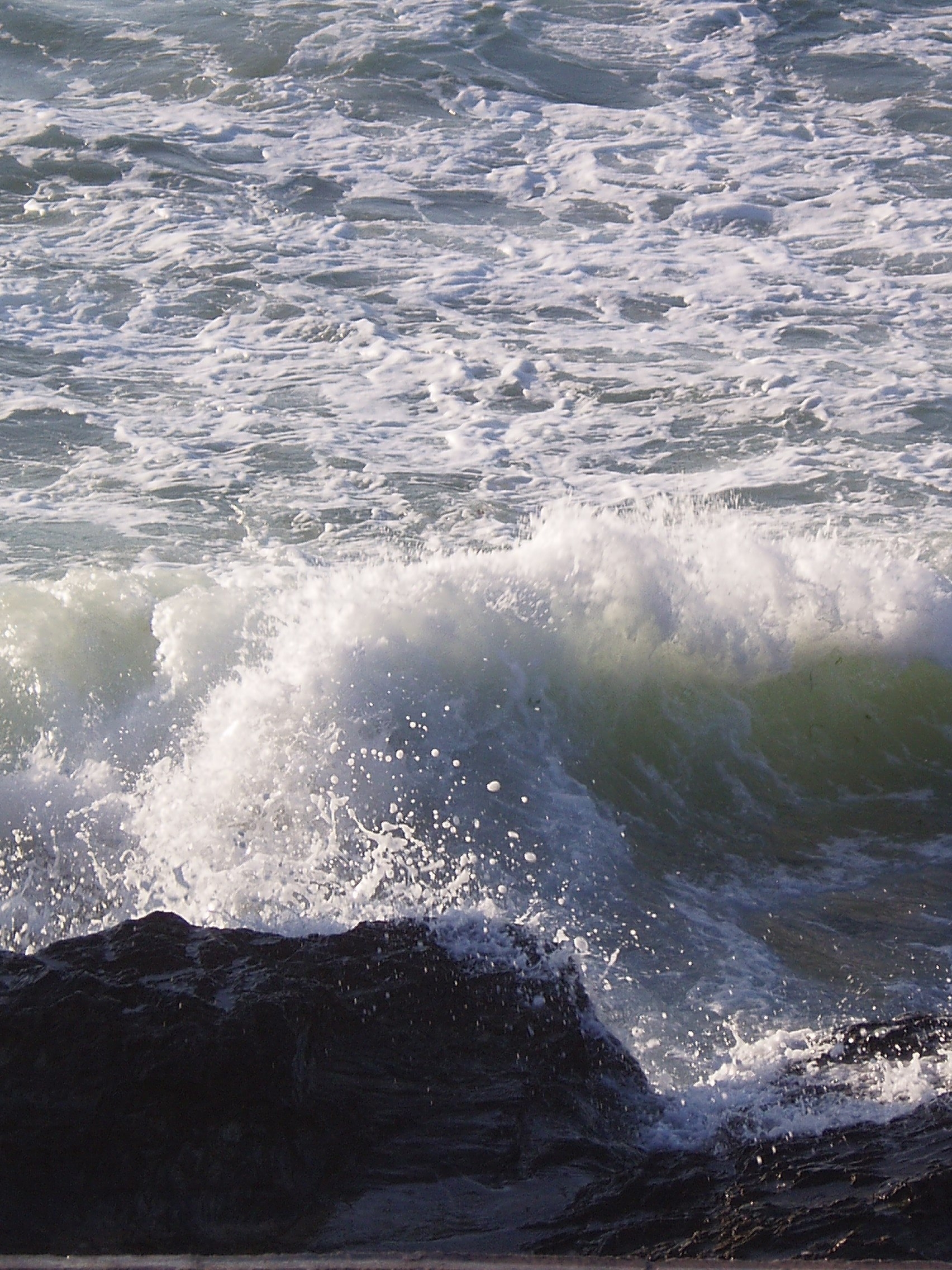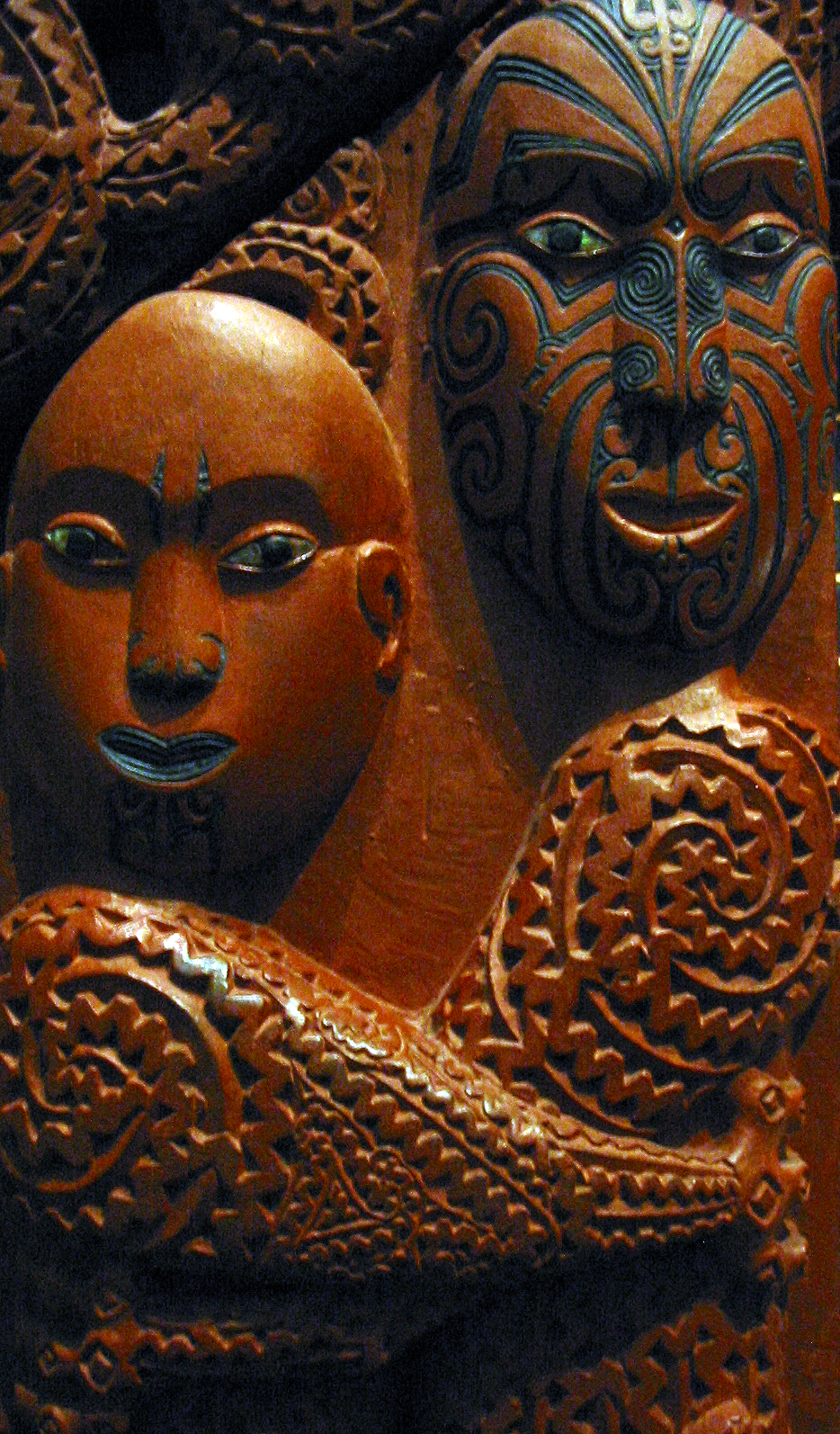|
Kiwa (mythology)
Kiwa is one of several male divine guardians of the ocean in the traditions of some Māori tribes of the East Coast of the North Island of New Zealand. A poetic name for the Pacific Ocean is ''Te moana nui a Kiwa'' (The great ocean of Kiwa). Kiwa's first wife, in some of these traditions, was Parawhenuamea, ancestor of streams that flow from the land to the sea and of fresh water generally. Kiwa's second wife was Hinemoana (Ocean woman), a personification of the sea. Kiwa and Hinemoana had a number of children. Children The names and numbers of their children vary in different accounts. One version names ten children and for most of these, gives details about the creatures they gave rise to: #Pipihura, ancestor of the cockle. #Te Uru-kahikahika, source of eels, lampreys and frostfish. #Wharerimu, ancestor of seaweed. #Hine-tapiritia, ancestor of certain molluscs and oysters. #Te Raengawha, origin of sea urchins, as well as various fishes. #Te Kiri-pakapaka, origin of the snapper ... [...More Info...] [...Related Items...] OR: [Wikipedia] [Google] [Baidu] |
Ocean
The ocean (also the sea or the world ocean) is the body of salt water that covers approximately 70.8% of the surface of Earth and contains 97% of Earth's water. An ocean can also refer to any of the large bodies of water into which the world ocean is conventionally divided."Ocean." ''Merriam-Webster.com Dictionary'', Merriam-Webster, [...More Info...] [...Related Items...] OR: [Wikipedia] [Google] [Baidu] |
Octopus
An octopus ( : octopuses or octopodes, see below for variants) is a soft-bodied, eight- limbed mollusc of the order Octopoda (, ). The order consists of some 300 species and is grouped within the class Cephalopoda with squids, cuttlefish, and nautiloids. Like other cephalopods, an octopus is bilaterally symmetric with two eyes and a beaked mouth at the center point of the eight limbs. The soft body can radically alter its shape, enabling octopuses to squeeze through small gaps. They trail their eight appendages behind them as they swim. The siphon is used both for respiration and for locomotion, by expelling a jet of water. Octopuses have a complex nervous system and excellent sight, and are among the most intelligent and behaviourally diverse of all invertebrates. Octopuses inhabit various regions of the ocean, including coral reefs, pelagic waters, and the seabed; some live in the intertidal zone and others at abyssal depths. Most species grow quickly, mature ea ... [...More Info...] [...Related Items...] OR: [Wikipedia] [Google] [Baidu] |
Zoosystema
''Zoosystema'' is a peer-reviewed scientific journal published by the National Museum of Natural History, France (''Muséum national d'histoire naturelle''), covering research in animal biodiversity. Specific subjects within the journal's scope include comparative, functional and evolutionary morphology, phylogeny, biogeography, taxonomy and nomenclature, among others. Zoosystema publishes articles in English and French. Indexing The journal is abstracted and indexed by Current Contents, Biological Abstracts, ASFA (Aquatic Sciences and Fisheries Abstracts), Pascal, Zoological Record, Journal Citation Index Expanded (SciSearch®) and Scopus Scopus is Elsevier's abstract and citation database launched in 2004. Scopus covers nearly 36,377 titles (22,794 active titles and 13,583 inactive titles) from approximately 11,678 publishers, of which 34,346 are peer-reviewed journals in top-l .... References {{reflist Zoology journals Animal science journals Open access journals Ac ... [...More Info...] [...Related Items...] OR: [Wikipedia] [Google] [Baidu] |
Portable Document Format
Portable Document Format (PDF), standardized as ISO 32000, is a file format developed by Adobe in 1992 to present documents, including text formatting and images, in a manner independent of application software, hardware, and operating systems.Adobe Systems IncorporatedPDF Reference, Sixth edition, version 1.23 (53 MB) Nov 2006, p. 33. Archiv/ref> Based on the PostScript language, each PDF file encapsulates a complete description of a fixed-layout flat document, including the text, fonts, vector graphics, raster images and other information needed to display it. PDF has its roots in "The Camelot Project" initiated by Adobe co-founder John Warnock in 1991. PDF was standardized as ISO 32000 in 2008. The last edition as ISO 32000-2:2020 was published in December 2020. PDF files may contain a variety of content besides flat text and graphics including logical structuring elements, interactive elements such as annotations and form-fields, layers, rich media (including video con ... [...More Info...] [...Related Items...] OR: [Wikipedia] [Google] [Baidu] |
Polynesia
Polynesia () "many" and νῆσος () "island"), to, Polinisia; mi, Porinihia; haw, Polenekia; fj, Polinisia; sm, Polenisia; rar, Porinetia; ty, Pōrīnetia; tvl, Polenisia; tkl, Polenihia (, ) is a subregion of Oceania, made up of more than 1,000 islands scattered over the central and southern Pacific Ocean. The indigenous people who inhabit the islands of Polynesia are called Polynesians. They have many things in common, including language relatedness, cultural practices, and traditional beliefs. In centuries past, they had a strong shared tradition of sailing and using stars to navigate at night. The largest country in Polynesia is New Zealand. The term was first used in 1756 by the French writer Charles de Brosses, who originally applied it to all the islands of the Pacific. In 1831, Jules Dumont d'Urville proposed a narrower definition during a lecture at the Geographical Society of Paris. By tradition, the islands located in the southern Pacific have also ... [...More Info...] [...Related Items...] OR: [Wikipedia] [Google] [Baidu] |
Shellfish
Shellfish is a colloquial and fisheries term for exoskeleton-bearing aquatic invertebrates used as food, including various species of molluscs, crustaceans, and echinoderms. Although most kinds of shellfish are harvested from saltwater environments, some are found in freshwater. In addition, a few species of land crabs are eaten, for example ''Cardisoma guanhumi'' in the Caribbean. Shellfish are among the most common food allergens. Despite the name, ''shellfish'' are not fish. Most shellfish are low on the food chain and eat a diet composed primarily of phytoplankton and zooplankton. Many varieties of shellfish, and crustaceans in particular, are actually closely related to insects and arachnids; crustaceans make up one of the main subphyla of the phylum Arthropoda. Molluscs include cephalopods (squids, octopuses, cuttlefish) and bivalves (clams, oysters), as well as gastropods (aquatic species such as whelks and winkles; land species such as snails and slugs). M ... [...More Info...] [...Related Items...] OR: [Wikipedia] [Google] [Baidu] |
Goddess
A goddess is a female deity. In many known cultures, goddesses are often linked with literal or metaphorical pregnancy or imagined feminine roles associated with how women and girls are perceived or expected to behave. This includes themes of spinning (textiles), spinning, weaving, beauty, love, sexuality, motherhood, domesticity, creativity, and List of fertility deities, fertility (exemplified by the ancient mother goddess cult). Many major goddesses are also associated with magic (supernatural), magic, war, strategy, hunting, farming, wisdom, fate, earth, sky, power (social and political), power, laws, justice, and more. Some themes, such as Discordianism, discord or disease, which are considered negative within their cultural contexts also are found associated with some goddesses. There are as many differently described and understood goddesses as there are male, shapeshifting, or neuter gods. In some faiths, a sacred female figure holds a central place in religious prayer a ... [...More Info...] [...Related Items...] OR: [Wikipedia] [Google] [Baidu] |
Kiwaidae
''Kiwa'' is a genus of marine decapods living at deep-sea hydrothermal vents and cold seeps. The animals are commonly referred to as "yeti lobsters" or "yeti crabs", after the legendary yeti, because of their "hairy" or bristly appearance. The genus is placed in its own family, Kiwaidae, in the superfamily Chirostyloidea. Five species have been described: '' Kiwa hirsuta'' discovered in 2005 on the Pacific-Antarctic Ridge, ''Kiwa puravida'' discovered in 2006 at cold seeps in the East Pacific (all other species are from hydrothermal vents), '' Kiwa tyleri'', known colloquially as the "Hoff crab", from the East Scotia Ridge, and '' Kiwa araonae'' from the Australian-Antarctic Ridge. Two similar but undescribed species are known from vents on the South West Indian Ridge and at the Galápagos respectively. Analysis of DNA has confirmed the distinction of the species, them having diverged from each other millions of years ago. The third undescribed species of ''Kiwa'' was discovere ... [...More Info...] [...Related Items...] OR: [Wikipedia] [Google] [Baidu] |
Bay Of Plenty
The Bay of Plenty ( mi, Te Moana-a-Toi) is a region of New Zealand, situated around a bight of the same name in the northern coast of the North Island. The bight stretches 260 km from the Coromandel Peninsula in the west to Cape Runaway in the east. The Bay of Plenty Region, governed by the Bay of Plenty Regional Council, incorporates several large islands in the bay, in addition to the mainland area. Called ''Te Moana-a-Toi'' (the Sea of Toi) in the Māori language after Toi, an early ancestor, the name 'Bay of Plenty' was bestowed by James Cook in 1769 when he noticed the abundant food supplies at several Māori villages there, in stark contrast to observations he had made earlier in Poverty Bay. History According to local Māori traditions, the Bay of Plenty was the landing point of several migration canoes that brought Māori settlers to New Zealand. These include the ''Mātaatua'', ''Nukutere'', ''Tākitimu'', '' Arawa'' and ''Tainui'' canoes. Many of the de ... [...More Info...] [...Related Items...] OR: [Wikipedia] [Google] [Baidu] |
Earth Mother
A mother goddess is a goddess who represents a personified deification of motherhood, fertility goddess, fertility, creation, destruction, or the earth goddess who embodies the bounty of the earth or nature. When equated with the earth or the natural world, such goddesses are sometimes referred to as the Mother Earth or Earth Mother, deity in various animistic or pantheistic religions. The earth goddess is usually the wife or feminine counterpart of the Sky Father or ''Father Heaven''. In some polytheistic cultures, such as the Ancient Egyptian religion which narrates the cosmic egg myth, the sky is instead seen as the Heavenly Mother or Sky Mother as in Nut and Hathor, and the earth god is regarded as the male, paternal, and terrestrial partner, as in Osiris or Geb who hatched out of the maternal ''cosmic egg''. Excavations at Çatalhöyük Between 1961 and 1965 James Mellaart led a series of excavations at Çatalhöyük, north of the Taurus Mountains in a fertile agricul ... [...More Info...] [...Related Items...] OR: [Wikipedia] [Google] [Baidu] |
Rangi And Papa
In Māori mythology the primal couple Rangi and Papa (or Ranginui and Papatūānuku) appear in a creation myth explaining the origin of the world (though there are many different versions). In some South Island dialects, Rangi is called Raki or Rakinui. Union and separation Ranginui first married Poharua Te Po where they bore 3 offspring including Aorangi (or Aoraki as given in South Island). He later married Papatūānuku together becoming the primordial sky father and earth mother bearing over 70 children including Tāwhirimātea, Tāne and Tangaroa, all of whom are male. Both Ranginui and Papatūānuku lie locked together in a tight embrace, and their sons forced to live in the cramped darkness between them. These children grow and discuss among themselves what it would be like to live in the light. Tūmatauenga, the fiercest of the children, proposes that the best solution to their predicament is to kill their parents. But his brother Tāne disagrees, suggesting that it is ... [...More Info...] [...Related Items...] OR: [Wikipedia] [Google] [Baidu] |





